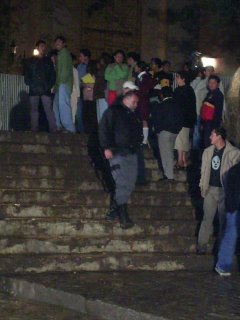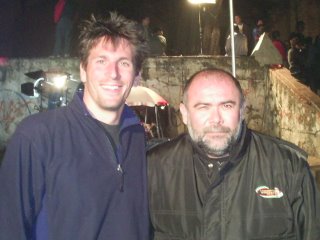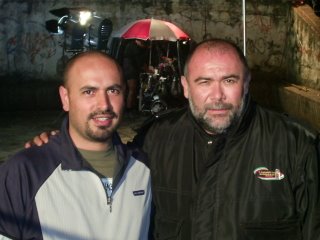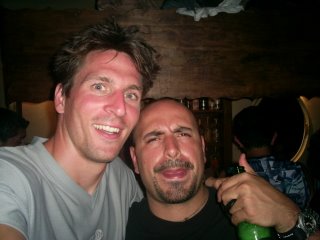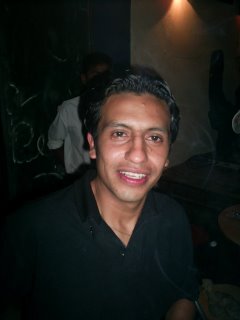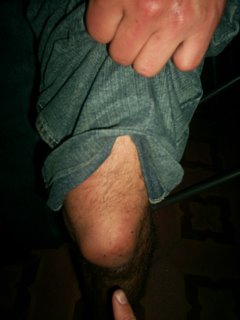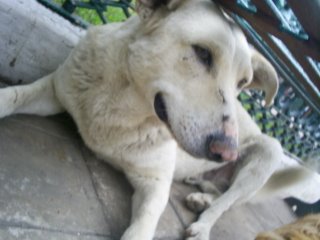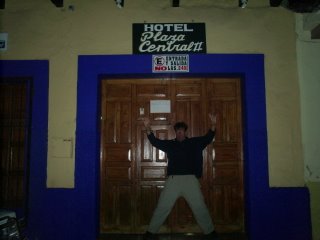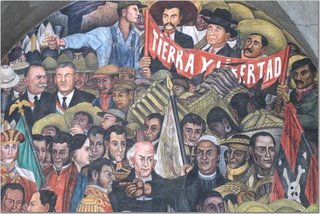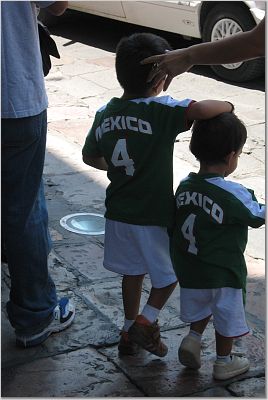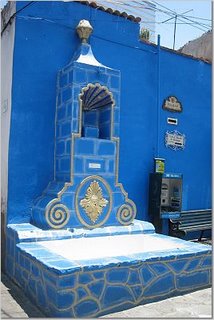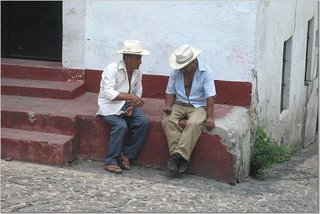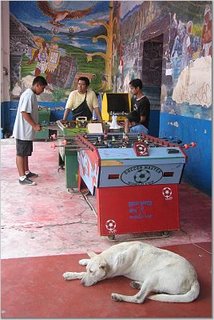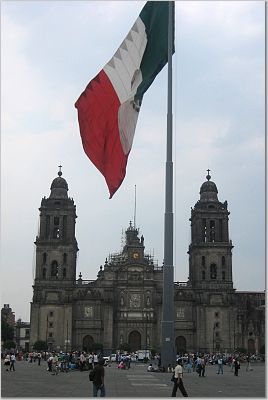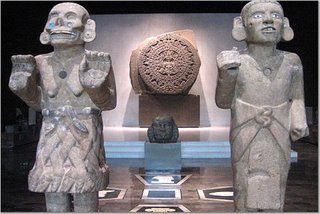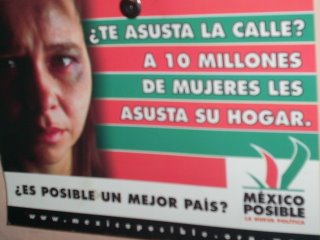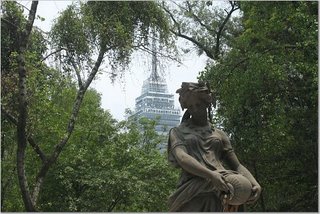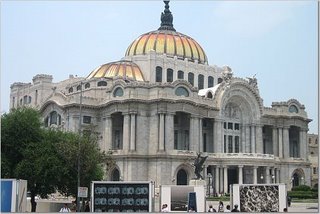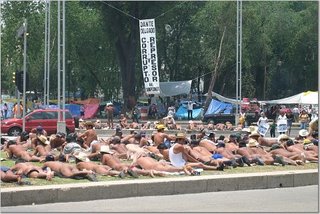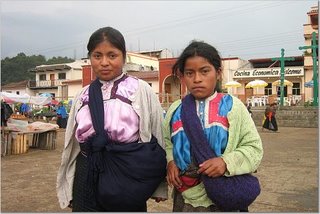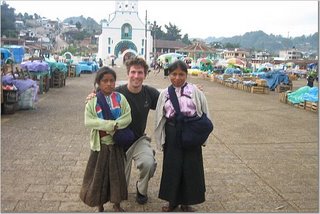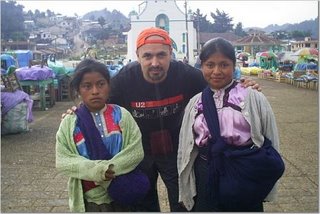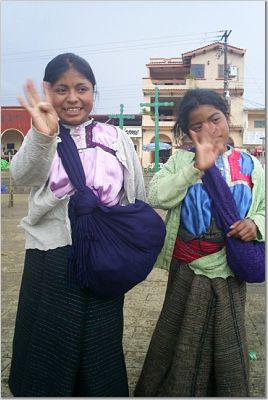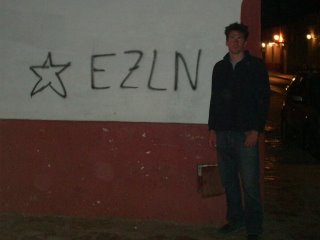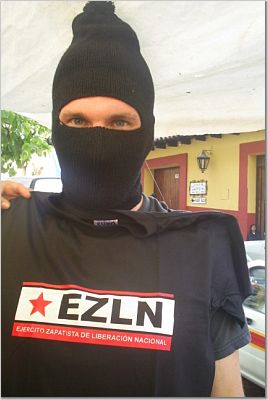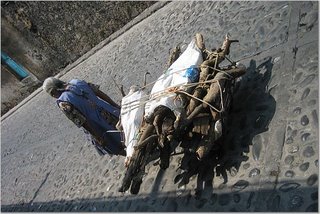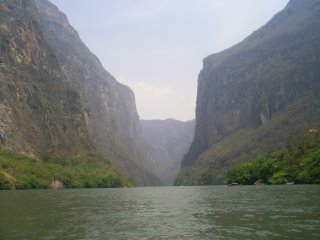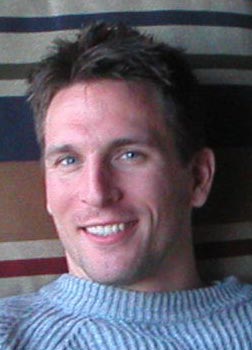Prelude: It is late, very late. As the last two visitors my friend Saul and I just helped to close down the last bar in town at 3:30am. In San Cristobal de las Casas on a Monday night; we walk up and down the streets (with the last beer in our hands) convinced there has to be another bar open, a party somewhere. The image of a bar with dancing music and one more cold cerveza Modelo keeps us searching. The fact that the last five people stumbling home have all told us that there is nothing else open leaves us unimpressed. For sure they are mistaken.
Bright lights blind our eyes. It is the middle of the night but the whole side of the street is illuminated. Security guards have blocked off the streets and movie cameras, directors and staff are going about their business of preparing for the shooting of a movie scene. Intrigued by the display I approach. Some moments later I spot a security guard by the side of a van. I walk up to him to greet him and in festive spirits, shake his hand, laying my arm around him and padding his shoulder. “What is going on here, dude?” I ask him. “We are shooting a film, “ he responds. I am about to ask the next question when I feel a slight pull on my arm. It is Saul pulling me towards him away from my new friend. As we get some distance he starts out laughing loud and finally asks: “Do you know who that was?“ “You know the security guard?“ I ask him surprised. “He is the main actor,” he laughs, “and very famous in Mexico. And you just ruined the scene.”
The main act: Some moments and some streets later, we turn around a corner and see a person but yet it seems difficult for him to keep the bicycle in between the two sidewalks, swerving back and forth. Only about 2 meters in front of us he sees us because all his attention is focused on keeping his bicycle. His eyes light up, the bicycle breaks squeak and he attempts to get off his bike nearly falling in the process. “You have to help me,” are the first words out of his mouth. He introduces himself as Marbin Janci and immediately points out that he is German (as one can easily tell by his name), although he looks as indigenous as it gets and is no more than 1.50 meters tall. We start walking together, he leaning on his bicycle for support.
In front of us are some 8 dogs playing and after a few more steps it becomes clearer that 7 of the (male) dogs are all trying to win the privileges of a sole female dog. As we approach the commotion Marbin Janci gets increasingly nervous. Finally he repeats: “You have to help me. These dogs are very dangerous.” With curiosity and shaking tails some of the dogs sniff our legs. Terrorized Marbin Janci jumps backwards, holding onto my shoulders tightly, trying to hide behind me. “What is going on? These dogs are harmless,” we tell him. With fear written in his eyes (somewhat diluted by an overdose of alcohol) he exclaims: “These dogs bit me. These are very dangerous.” His hands holding on tighter onto my shoulders. “Which one bit you?” I ask. Immediately forgetting all his fear, he jumps out from behind me (sometime it can be helpful to have a short memory) and shouts: “This one!” pointing at the white dog (the only white one of the bunch). The white dog takes a step back in intimidation and obviously knows that Marbin Janci is referring to him. “How often did he bite you?” Saul continues the questioning. By now we are both laughing heavily because the situation is just too funny: 4am inebriated Marbin Janci is scared of a helpless white street dog (granted, we are not completely sober either). “Look here,” replies Marbin Janci immediately and pulls up his jeans pants as if proudly displaying an accomplishment, ”he bit me 3 times in the leg.” And indeed there are several teeth imprints on his leg. Suddenly, as if struck by a profound insight he jumps up and declares: “I am going to kill this dog.” He reaches for his backpack and continues: “Good thing I brought a pistol with me.” (It is not too unusual that people carry guns in this part of the universe). He already has his hand inside the backpack (and seems determined to follow through) when we manage to calm him down. But when all attempts to dissuade him fail we change strategies. “If you shoot the dog there will be a lot of noise. Better you beat the dog to death with your bicycle,” we suggest to him and our persuasion works. He returns the backpack onto his shoulders (we breath a sigh of relief) and lifts up the bicycle and starts running towards the white dog (the other dogs jumping aside left and right). And what follows is a display I will never forget. Drunken Marbin Janci chasing after the white dog trying to hit it with his bicycle; the problem being that Marbin Janci cannot even walk straight, let alone hold up his bicycle. Saul and I are dying of laughter and even the white dog seems to be laughing at him and easily avoids the clumsy attempts to through the bicycle in his direction. Eventually Marbin Janci gives up tired and disappointed. The white dog and his friends look perplexed, not sure what the commotion was all about. But Marbin Janci’s pride is strong, the urge for revenge deep. Again he reaches for his backpack: “This thing with the bicycle does not work,“ he explains, “Better I just shoot the dog.” With the ingenuity of two “well oiled” brains we change the diversion strategy. “Marbin Janci, we are invited to this big party going on right now. Don’t you want to come with us? We are going right now.” And the magic word “party” does the trick. He immediately forgets about the white dog and turns his attention to us. His eyes light up, “you are going to a party,” he says excitedly. “I want to come with you.”
And so we continue our journey through the night of San Cristobal de las Casas, Marbin Janci providing free first class entertainment. All of a sudden he stops and exclaims (sometimes it is difficult to talk and walk at the same time), “What am I going to do with my bike at the party. Better I bring it home first and then go to the party.”
One moment ago Marbin Janci was barely able to walk but all of a sudden he is back in the saddle of his bicycle and riding as if his life depended on it. The last thing we see of Marbin Janci is our new friend racing into the night, the pistol inside the backpack on his back, on his bicycle which only moments ago was used to chase (or to amuse) our other new friend, the white dog.
Author’s note: this is a true story and only one of the fun and unforgettable encounters of San Cristobal de las Casas. As “coincidence” will have it the following night Saul and I are making our rounds once again. We turn around a corner (this time a different one) and see a movie set (which looks suspiciously familiar. A few moments later we spot our friend, the main actor (this time not dressed as security guard). Politely we wait until the scene is over before approaching. We ask if he remembers his two friends from the previous night. He smiles, says yes, and invites us to take a picture. (Take a look at our movie start, Jesús Ochoa:
http://cinemexicano.mty.itesm.mx/estrellas/jesus_ochoa.html)
A few corners later we spot a group of dogs running about the street. Of course it is our group of dogs and the white dog is posing for a photo moments later. Thirsty we decide to have a drink at the next bar. We enter and inside is Marbin Janci dancing the night away. Excited he hugs us, we take some pictures to document the story and the night continues…It all feels like déjà vu.
All the photos below are actual photographs of the actual participants of this story (however taken one day later).
